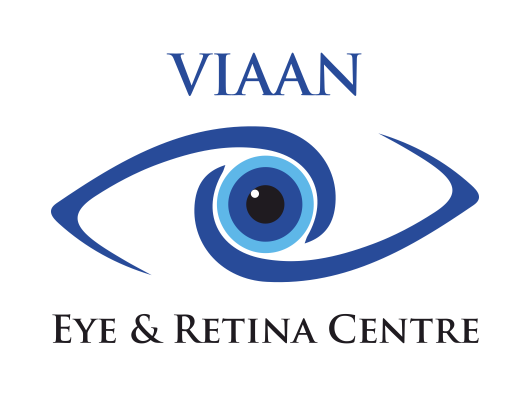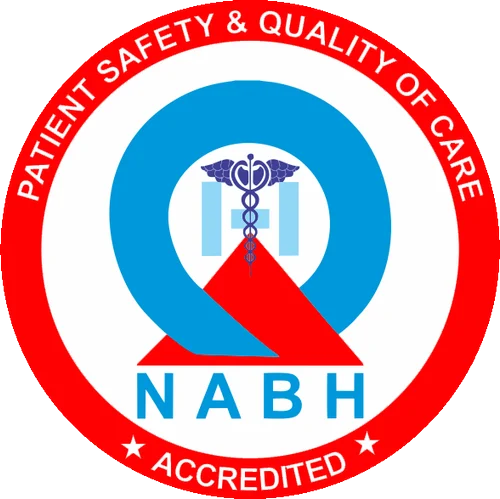GLAUCOMA
WHAT IS GLAUCOMA?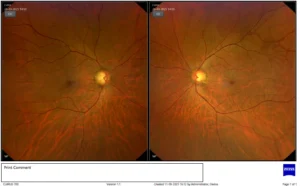
Fundus photo shows optic disc suspect in both eyes
Glaucoma is a group of conditions, in which high pressure inside the eye (intraocular pressure) damages the optic nerve of the eye. Glaucoma usually affects both the eyes. It commonly occurs in adults above 40 years of age, but can even occur in newborn babies. The vision lost due to glaucoma is irreversible and hence it is very important to detect this disease as early as possible and treat early to preserve vision.
OCT disc shows retinal nerve fiber (RNFL) thinning in both the eyes
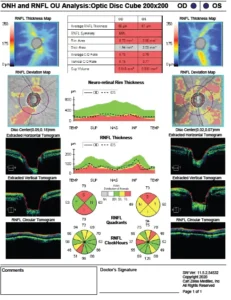
WHAT IS HIGH INTRA OCULAR PRESSURE(IOP) AND HOW IT AFFECTS VISION?
Our eyes contain a clear fluid called aqueous humour, which is continuously produced in the eye to bath and nourish the structures inside it. The fluid normally drains out of the eye through drainage canals in a fine meshwork located around the edge of the iris (the coloured part of the eye that surrounds the pupil). In people with glaucoma the fluid fails to drain due to some defect and thus increases the pressure inside the eyes called raised Intraocular Pressure (IOP) (or Tension) which damage the optic nerve of the eye. The optic nerve connects the eye to the brain and carries the visual signal. This damage to the optic nerve results in loss of peripheral visual fields initially and later on affects the central vision as well.
WHAT ARE THE TYPES OF GLAUCOMA?
1. Open angle glaucoma
It happens when the eye’s drainage canals of the eye become clogged over time. The inner eye pressure (also called intraocular pressure or IOP) rises because the correct amount of fluid cannot drain out of the eye. With open-angle glaucoma, the entrances to the drainage canals are clear and open. The clogging problem occurs further inside the drainage canals, similar to a clogged pipe below the drain in a sink. Most people have no symptoms and no early warning signs. If open-angle glaucoma is not diagnosed and treated, it can cause a gradual loss of vision. This type of glaucoma develops slowly and sometimes without noticeable sight loss for many years. It usually responds well to medication, especially if caught early and treated. This form of glaucoma is more common in Caucasians.
2. Closed angle glaucoma
This type of glaucoma is also known as acute glaucoma or narrow angle glaucoma. It is more common in Asians and is very different from open angle glaucoma in that the eye pressure usually rises very quickly.This happens when the entrance to the drainage canals are very narrow or covered over, like a sink with something covering the drain. Symptoms of angle closure glaucoma may include headaches, eye pain, nausea, rainbows around lights at night, and very blurred vision.
WHAT ARE THE SYMPTOMS?
In most cases of glaucoma, the patient is not aware of the gradual loss of sight until vision is significantly impaired. However, if glaucoma progresses without adequate treatment, the following symptoms may occur in some individuals:
• Pain around the eyes when coming out from darkness (e.g., as soon as the person comes out of a cinema hall)
• Coloured halo rings seen around light bulbs especially in the mornings and nights
• Frequent change of reading glasses, headaches, pain and redness of the eyes
• Reduced vision in dim illumination and during nights
• Gradual decrease of side vision with the progression of glaucoma
WHO IS AT RISK FOR GLAUCOMA?
Anyone can develop glaucoma. Some people are at higher risk than others. They include:
• Everyone over the age of 40 yrs.
• People with family history of glaucoma.
• Diabetics
• People with near sightedness (Myopia) for open angle type and far sightedness (hyperopia) for close angle type
WHEN SHOULD I GET MY EYES TESTED FOR GLAUCOMA?
• If you have a family history of glaucoma
• If you experience blurring of vision
• If you see haloes around light
• If you suffer from frequent headaches
• Frequent change of glasses due to decreasing eyesight
HOW IS GLAUCOMA DIAGNOSED?
1.Applanation
Tonometry
The tonometry test measures the inner pressure of the eye. Usually drops are used to numb the eye. Then the doctor or technician will use a special device that measures the eye’s pressure.
2.Ophthalmoscopy
Ophthalmoscopy is used to examine the inside of the eye, especially the optic nerve. In a darkened room, the doctor will magnify your eye by using an ophthalmoscope (an instrument with a small light on the end). This helps the doctor look at the shape and color of the optic nerve.
3. Perimetry
Perimetry is a procedure where the patient wears a patch over one eye and looks straight ahead at a bowl-shaped white area. At the same time, the computer presents lights in fixed locations around the bowl. The patient indicates each time he or she sees a light, which is why perimetry is able to provide a map of the visual fields. The type of vision loss associated with glaucoma is relatively specific, and perimetry can detect the typical visual-field defects of glaucoma disorder.Theperimetry test is also called a visual field test.
4. Retinal Nerve Fibre Analysis/OCT
Retinal Nerve Fibre Analysis/OCT Nerve fibre analysis is a newer method of glaucoma testing in which the thickness of the nerve fibre layer is measured. Thinner areas may indicate damage caused by glaucoma. This test is especially good for patients who may be considered to be a glaucoma suspect and also to indicate if a person’s glaucoma is progressively becoming worse. The OCT instrument utilizes a technique called optical coherence tomography which creates images by use of special beams of light. The OCT machine can create a contour map of the optic nerve, optic cup and measure the retinal nerve fiber thickness. Over time this machine can detect loss of optic nerve fibers.
WHAT IS THE TREATMENT?
Glaucoma is a chronic (long-lasting) progressive condition. Any vision loss that has occurred, before glaucoma was diagnosed, cannot be reversed. Glaucoma treatments include medicines, laser trabeculoplasty, conventional surgery, or a combination of any of these. While these treatments may save remaining vision, they do not improve sight already lost from glaucoma.
Medicines. Medicines, in the form of eyedrops or pills, are the most common early treatment for glaucoma. Some medicines cause the eye to make less fluid.
Others lower pressure by helping fluid drain from the eye. These medicines are generally to be used lifelong, and it is very important to use the medicines regularly at prescribed timings and not to stop the medicines without consulting the doctor.
Laser trabeculoplasty. Laser trabeculoplasty helps fluid drain out of the eye. Your doctor may suggest this step at any time. In many cases, you need to keep taking glaucoma drugs after this procedure. Laser trabeculoplasty is performed in your doctor’s office or eye clinic. Before the surgery, numbing drops will be applied to your eye. As you sit facing the laser machine, your doctor will hold a special lens to your eye. A high-intensity beam of light is aimed at the lens and reflected onto the meshwork inside your eye. You may see flashes of bright green or red light. The laser makes several evenly spaced burns that stretch the drainage holes in the meshwork. This allows the fluid to drain better.
Glaucoma Filtering surgery. Conventional surgery makes a new opening for the fluid to leave the eye. Your doctor may suggest this treatment at any time. Conventional surgery often is done after medicines and laser surgery have failed to control pressure.
As with laser surgery, conventional surgery is performed on one eye at a time. Usually the operations are four to six weeks apart. Conventional surgery is about 60 to 80 percent effective at lowering eye pressure.
Humphrey visual field (HVF)
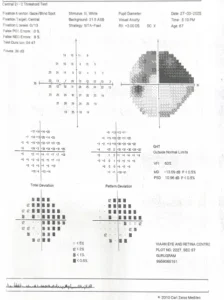
HVF shows severe superior arcuate defects in glaucoma
Glaucoma is hereditary?
Yes, except for secondary glaucoma. It is important to screen all family members to rule out glaucoma in a patient’s siblings, children, and parents.
How frequently should I get my eyes check?
All adults above the age of 40 and all people with a family history of glaucoma should get their eyes screened once a year. If you have been diagnosed with glaucoma, you should come for a check-up whenever your doctor suggests.
Is there any relationship between body pressure and eye pressure?
There is no DIRECT link between the two. High blood pressure does not mean you have high eye pressure. However, high blood pressure may be a risk factor for developing glaucoma.
How long should I take the medications?
To prevent future vision loss, the glaucoma medications MUST be taken for the rest of your life. You may only stop the medication if your doctor recommends that it be stopped.
Even if I don’t use my medications for 2-3 weeks, I am fine. Why should I continue the medications?
Glaucoma is a very slow disease that affects the optic nerve. Even if it seems like your vision is fine, it is slowly getting worse as the disease advances. Our aim is to prevent ALL future vision loss. This is only possible if you follow your treatment plan.
Will the eye drops reverse vision loss?
No. The eye drops only help lower the eye pressure. This will prevent future vision loss. There is no way to recover vision once it is lost to glaucoma.
Is there any other treatment, in place of applying the eye drops every day?
No, there is no other treatment unless your eyes are not responding to the eye drops. You should use the drops as instructed by your doctor. Eye drops are the main way of treating glaucoma, so they must be applied regularly.
What does laser treatment mean?
Laser means that a high energy light beam is aimed at the eye to lower its pressure.
If I undergo laser treatment, will my vision improve?
No, this is not to improve vision. It is to get normal eye pressure and to slow the damage to the optic nerve.
If I don’t get the laser treatment, what will happen to me?
If your doctor recommends laser treatment, you must get it. If you don’t, your eye pressure will increase and your vision will permanently decrease.
Will you need to repeat the laser again?
Yes, some patients will need to get laser treatment a few times before the fluid drainage returns to normal.
For how many days should I be using the eye drops after laser?
You should use the steroid eye drops for 2 weeks.
What is the purpose of glaucoma surgery?
The surgery is to control pressure. In this way, it stops the progression of the disease.
After getting glaucoma surgery, should I continue taking the eye drops?
No, you should stop the drops. If eye drops are needed again, your doctor will tell you during the follow-up appointment.
Does this surgery prevent vision loss?
You will not get back any vision you already lost. It will prevent future vision loss.
How many days will I need to take bedrest after the surgery?
It is recommended that you rest for at least 15 days after the surgery.
Can’t you replace my eye?
Unfortunately, there is no way to replace an entire eye with a donor’s eye. Currently, only the cornea of the eye (the front surface) can be replaced. Since glaucoma damages the optic nerve at the back of the eye, corneal transplants will not help treat glaucoma.
How many visits do I have to make after glaucoma surgery?
You will need to make 4-6 visits within three months following surgery for removal of sutures and for injections if required..
